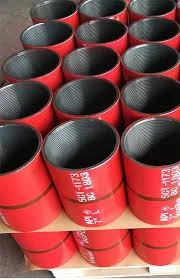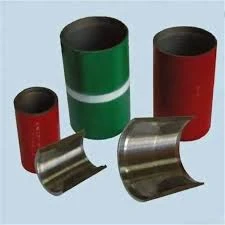- Afrikaans
- Albanian
- Amharic
- Arabic
- Armenian
- Azerbaijani
- Basque
- Belarusian
- Bengali
- Bosnian
- Bulgarian
- Catalan
- Cebuano
- Corsican
- Croatian
- Czech
- Danish
- Dutch
- English
- Esperanto
- Estonian
- Finnish
- French
- Frisian
- Galician
- Georgian
- German
- Greek
- Gujarati
- Haitian Creole
- hausa
- hawaiian
- Hebrew
- Hindi
- Miao
- Hungarian
- Icelandic
- igbo
- Indonesian
- irish
- Italian
- Japanese
- Javanese
- Kannada
- kazakh
- Khmer
- Rwandese
- Korean
- Kurdish
- Kyrgyz
- Lao
- Latin
- Latvian
- Lithuanian
- Luxembourgish
- Macedonian
- Malgashi
- Malay
- Malayalam
- Maltese
- Maori
- Marathi
- Mongolian
- Myanmar
- Nepali
- Norwegian
- Norwegian
- Occitan
- Pashto
- Persian
- Polish
- Portuguese
- Punjabi
- Romanian
- Russian
- Samoan
- Scottish Gaelic
- Serbian
- Sesotho
- Shona
- Sindhi
- Sinhala
- Slovak
- Slovenian
- Somali
- Spanish
- Sundanese
- Swahili
- Swedish
- Tagalog
- Tajik
- Tamil
- Tatar
- Telugu
- Thai
- Turkish
- Turkmen
- Ukrainian
- Urdu
- Uighur
- Uzbek
- Vietnamese
- Welsh
- Bantu
- Yiddish
- Yoruba
- Zulu
ມ.ກ. . 13, 2025 15:26
Back to list
what is a bull plug used for
A bull plug, an often-overlooked component in the oil and gas industry, plays a crucial role in maintaining the integrity and efficiency of drilling operations. Made typically of high-grade steel to withstand immense pressures and corrosive environments, the bull plug is primarily used to seal the end of the pipe or pipe fitting threads. This seemingly simple tool contributes significantly to the safety and functionality of complex oilfield operations.
Field experts often stress the importance of regular maintenance and inspection of bull plugs. Over time, even the most robust bull plugs can wear due to constant exposure to harsh environmental conditions and repeated pressure cycles. Routine inspections for signs of wear, corrosion, or damage are vital to ensure that the bull plug continues to function effectively. Some advanced bull plug designs even incorporate anti-corrosion coatings or surface treatments that further enhance their durability and lifespan. A common practice among seasoned oilfield professionals is keeping a detailed log of when each bull plug is installed and the conditions it has been exposed to. Such records provide valuable data that can assist in predicting when a bull plug is nearing the end of its useful life, thus allowing for timely replacements and avoiding unpredicted system failures. In sum, the bull plug, though a small component, holds a pivotal place in the safety and efficiency of oil and gas operations. Its correct application can mean the difference between a smoothly running operation and a costly, potentially hazardous situation. As technologies and materials continue to advance, the functionality and reliability of bull plugs are bound to improve, further reinforcing their critical role in the ever-evolving energy sector. Selecting and maintaining the right bull plug not only upholds operational integrity but also aligns with best practices in safety and environmental stewardship, showcasing expertise and authority in the industry.


Field experts often stress the importance of regular maintenance and inspection of bull plugs. Over time, even the most robust bull plugs can wear due to constant exposure to harsh environmental conditions and repeated pressure cycles. Routine inspections for signs of wear, corrosion, or damage are vital to ensure that the bull plug continues to function effectively. Some advanced bull plug designs even incorporate anti-corrosion coatings or surface treatments that further enhance their durability and lifespan. A common practice among seasoned oilfield professionals is keeping a detailed log of when each bull plug is installed and the conditions it has been exposed to. Such records provide valuable data that can assist in predicting when a bull plug is nearing the end of its useful life, thus allowing for timely replacements and avoiding unpredicted system failures. In sum, the bull plug, though a small component, holds a pivotal place in the safety and efficiency of oil and gas operations. Its correct application can mean the difference between a smoothly running operation and a costly, potentially hazardous situation. As technologies and materials continue to advance, the functionality and reliability of bull plugs are bound to improve, further reinforcing their critical role in the ever-evolving energy sector. Selecting and maintaining the right bull plug not only upholds operational integrity but also aligns with best practices in safety and environmental stewardship, showcasing expertise and authority in the industry.
Next:
Latest news
-
Tubing Pup Joints: Essential Components for Oil and Gas OperationsNewsJul.10,2025
-
Pup Joints: Essential Components for Reliable Drilling OperationsNewsJul.10,2025
-
Pipe Couplings: Connecting Your World EfficientlyNewsJul.10,2025
-
Mastering Oilfield Operations with Quality Tubing and CasingNewsJul.10,2025
-
High-Quality Casing Couplings for Every NeedNewsJul.10,2025
-
Boost Your Drilling Efficiency with Premium Crossover Tools & Seating NipplesNewsJul.10,2025
Related Products







